New engines, refinement spark 2011 Mustang
My rule of thumb regarding new vehicle introductions is that the hyperbole seems to be inversely proportional to the substance. But while some automakers have compromised reality with hype, Ford might be guilty of understatement with the introduction of the 2011 Mustang.
If you don’t think it looks different, drive one through city traffic and see how many people in other cars, or on foot, shout out and give you a thumbs-up. And if you don’t think it performs differently, then you fail to comprehend the significance of an entirely new and high-tech, all-aluminum, 5.0-liter V8 that tops 400 horsepower and is more “boss” than those fondly remembered Boss 302 engines of 1970. Or, a novel application of the 3.7-liter version of Ford’s high-tech V6 that tops 300 horsepower. Both engines perform admirably for go-power as well as go-past-the-gas-station efficiency.
Summoning the nation’s automotive media to Los Angeles, Ford introduced the new car by officially calling it the “2011 Mustang Refresh.” During a car’s four or five year lifespan, it might get refreshed with a mid-term styling tweak, and in the Mustang’s case, that was done for the 2010 model year. The new 2011 version stayed on the same platform, with the same basic silhouette, and the innovative interior features, so some journalists overlooked the obvious question why Ford would bring a herd of journalists to California for a change of grille and tail fascias. Some published syndicated reports I’ve read expressed positive vibes, but said since the Mustang was revised and refined for 2010, the 2011 is only a modest alteration.
Modest? Ford may have to go back to Hyperbole School.
Chief engineer Dave Pericak simplified the preliminary information by issuing the motto the engineering team accepted as its challenge: “Improve everything, and compromise nothing.”
Car-makers who have done much less to a car could have turned that into a 20-minute monologue.
Ford revolutionized the U.S. auto industry when it brought out the first Mustang, back in 1965, leading a charge that brough us the Chevrolet Camaro, Dodge Challenger, Plymouth Barracuda, Pontiac Firebird, and American Motors the Javelin, as everybody sought a piece of the highly popular “ponycar” segment. Younger journalists, who might not remember all that, have actually written that the term ponycar came from the name Mustang, assuming a horse-to-horse connection, when actually the term covered that whole array of long-hood/short-rear deck, front-engine/rear-drive sporty coupes, because they were smaller than the big horses — larger sedans and sedan-based coupes.
Midsize cars and the demise of the early 1970s hot cars carved into the segment’s chunk, and one by one, all of them disappeared — all but the Mustang, which tried to change with the times. The times saw a Japanese takeover of the sporty coupe market, with Honda leading the way with the Accord’s coupe version, and the expansion of cars such as the Mazda MX-6 version of the 626. So the Mustang got smaller, but it also under-achieved with less-performance, then it grew again, and took on a newer V8 engine. Finally the Mustang came back out resembling its original self, and the resurgence was so successful that Dodge brought out a new Challenger, and Chevrolet followed with the much-promised and long-awaited return of the Camaro.
Ford stayed on its game, refining the Mustang and adding the latest two or three Shelby models to revive memories of Cobras past. The Challenger and the Camaro are stunning to look at, but they share one problem — both are surprisingly heavy. The Challenger body was placed on the Charger’s sedan platform, and stuffing a Hemi V8 in it helped performance. The Camaro is also very heavy, so Chevy complements a strong 3.6-liter V6 with the 6.2-liter Corvette V8. So it moves, and quite well at that.
With an eye toward those two reborn competitors, Ford redid the Mustang’s 2010 refinement to make it lighter and more agile. An adequately powered sporty coupe with its overhead-cam 4.6-liter V8, the Mustang kept clinging to its all-around driveability edge. Still, Chevy both the Camaro and Challenger are attracting attention with lots of power from those large, if aging, pushrod engines.
That prompted Ford to add to its recent surge in technical advancements while upgrading the Mustang again for 2011, installing either its high-tech V6 or an all-new 5.0-liter V8.
First, Ford did away with the aged 4.0-liter V6, an engine that began life powering Ford’s European cars, with a German heritage that gained overhead cams and enough improvements over the years to almost stay contemporary. In the meantime, Ford had built a jewel of a high-tech 3.5-liter V6 three years ago — with a 3.7-liter version as well. Those provide the drivetrains of choice for almost everything in Ford’s stable using transverse-mount, front-wheel-drive architecture.
For the Mustang, Ford engineers switched the 3.7 to longitudinal placement, connected it to a driveshaft, and ran its power through to that solid axle rear.
If you didn’t know there was a V8 available, the 3.7 V6 would be more than enough, even if you are a V8 fancier. Its 305 horsepower puts it in the class of one that can boast of more than 300 horses and an EPA estimate of over 30 miles per gallon, at 31 highway. It also has 280 foot-pounds of torque, giving the Mustang plenty of punch off the line, or as the revs rise to its impressive 7,000-RPM redline.
Select the 3.7 with either the 6-speed manual transmission or the 6-speed automatic, and it comes with dual exhausts, which sound satisfyingly potent.
One event at the introduction was for us to drive various Mustangs out to a large parking lot location where a series of cones outlined a nice, twisty autocross. Stabbing the gas pedal for short straightaway bursts, I was impressed enough with the response to ask a Ford engineer, “Are these V8s?” They were not. All the autocross Mustangs were V6-powered, with a V6 that equals the power that the SVT Mustang V8 churned out in 1999.
Maybe the Mustang doesn’t “need” a V8, but there is what we want vs. what we need. The new 5.0 V8 is definitely something special, from its forged steel crankshaft, to its high-revving potency, and to the wonderful exhaust warble.
This time we stopped at a small regional airport, where Ford had contracted to set up a small dragstrip — an eighth-mile straightaway on one of the runways. We were driving GT models, armed with the new V8. Because of an uneven number of journalists, I had the benefit of being accompanied by Tom Barnes, a Ford engineer. Not only was it a benefit because Barnes was a great source of information, but he’d driven the car enough so instead of the usual driver changes along the route, I got to drive it all, both days.
For those still running on the fumes of 1970, it might seem foolish for Ford to look at the Hemi and the 6.2 Corvette engine in its competitors and build its new V8 to only 5.0-liter displacement. But the old American-car theory that “there’s no substitute for cubic inches” has been blown away by the contemporary answer: “Yes there is — it’s called technology.”
Surprisingly, the Mustang has stayed with a solid rear axle, compared to the sophisticated independent rear axles of virtually all other cars. But if the bottom line is how the car handles, the Mustang’s exploits on the autocross course, as well as while sailing through the curving California foothills, up mountains and down through valleys, is pretty convincing. Besides, the weight-saving fits Mustang’s concept of staying light and agile. That’s another reason why 5-liters is more than enough. With the dual overhead cams twirling, the new V8 cranks out 412 horsepower and 390 foot-pounds of torque.
As everybody lined up to take their turns and get acquainted with the standard drag-racing “Christmas tree” starting lights, I took a warm-up run in a Mustang. All of the Mustangs were equipped with the 6-speed automatics, and you could click the traction-control on or off, depending on whether you wanted to screech the street-radial tires or glue the car to the track for maximum traction.
A couple of flashy Camaros were parked in the left lane, with their Corevette engines and all. I tried one, and cranked off a 9.235-second run, hitting 80.81 miles per hour. It felt very fast, and I was impressed. Then I tried a sequence of different Mustangs, with different rear-axle ratios. My three tries ranged from 8.695 seconds at 85.73 mph, to my personal best of 8.573 seconds at 86.17 mph. It’s not as though the Mustang felt that much swifter, but running over six-tenths of a second quicker, and over 5 mph faster is an enormous difference in a standing-start one-eighth-mile burst. Especially when the swifter time and higher speed were both recorded by 5.0 liters against 6.2 liters.
It was fun, and entertaining, as well as informational. What Ford didn’t bother explaining is that with the dual overhead cams and their higher-revving capability, the Mustang was just starting to reach into the range of its performance sweet spot.
As for sticker price, the V6-powered Mustang has a base price of $23,000, and the V8-loaded GT model starts at $30,000. Those are bargain prices for so much performance technology, because the “modest” upgrades of the 2011 Mustang engines measure almost 100 horsepower more for both V6 and V8 versions, as well as 7-miles-per-gallon fuel economy improvements.
Ford also has hit the mark with packages. The GT gets 19-inch wheels, with either a “billet” grille, or the foglight package, which insets large lights inside the grille. You also get a pedestal spoiler on the rear, and Brembo brakes, as well as upgraded and firmer suspension. The V6 models come in an impressive basic style, or with a Mustang Club of America package, with 18-inch wheels over the standard 17s. The V6 can be bolstered by the stiffer-handling Performance package, adding many of the GT items, including special 19-inch alloy wheels.
If I have a complaint on the slick-steering, high-powered Mustang it’s that Ford has borrowed a page from Chevrolet’s book of tricks by adding the hated skip-shift device. Under the guise of summoning misleading fuel economy numbers for EPA estimates, the device causes the 6-speed shifter to go directly from first to fourth during moderate acceleration. If you go really slow, or hit the gas really hard, it will shift directly from first to second. Previously a nuisance only on the Corvette, and other Corvette-powered vehicles in GM’s line, this device is now a reward for buying the stick-shifting Mustang GT.
Maybe I’m in the distinct minority, but I’m a second-gear lover. I don’t want to do standing-start burnouts; I tend to start up moderately in first, then hit second and hammer it a bit. Nothing illegal, mind you, but running up the revs in second is all the kicks I need. When I do my thing on the Mustang GT, I pull the shifter back and hammer the gas…and the thing falls on its face, because I’m in fourth. By the time I’ve wrestled the shifter back up and around and down into second, I’m seething at having lost the thrill of a smooth-shifting upshift into the wide power band.
It’s reason enough to buy the 2011 Mustang with the automatic, which is also a 6-speed, except for one thing: Ford neglected to include steering wheel paddles to allow a driver to manually override the automatic. It’s as if Ford made a boardroom decision to make the new Mustangs really neat looking, and really fun to drive, but cheated everyone out of the fun of shifting.
If the transmissions have the only things I consider less than ideal, the handling certainly is up to the best high-performance standards. The entire platform is reinforced by a large cross-member that aids stability, and the car responds precisely, and steering is razor-sharp. Electric power steering avoids the usual pitfall of numbness, and instead feels well-weighted, while the car gains the asset of not having the weight of a power-steering pump.
The 2011 Mustang also has the optional SYNC system Ford has worked out with Microsoft, allowing occupants to command their personal listening devices around with voice commands. A neat feature that might be seen as a gimmick by many is the ability to alter the instrument lighting and the ambient lighting by changing color at the touch of a button. Do you like red, blue, green, purple, orange, or what? Hit the switch and change it — by the hour, if you so choose.
Cynics who are looking for nitpicks might point out that the rear seat is useful for very small children at best. I don’t see it as a problem. If nobody is riding back there, you just have fewer witnesses to compromise the light weight of the package. Or to hear you grumbling about the blasted skip-shift.
Comments
Tell me what you're thinking...
and oh, if you want a pic to show with your comment, go get a gravatar!


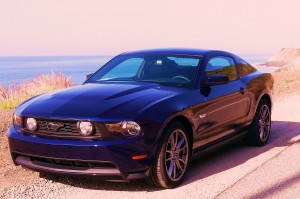
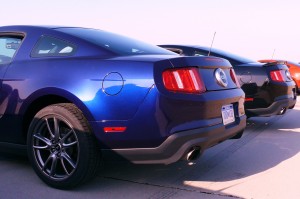
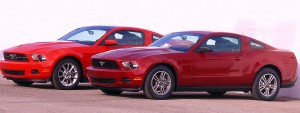
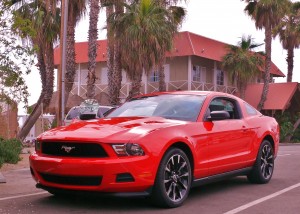
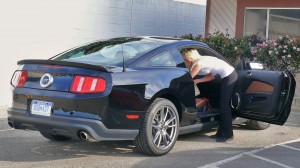
 John Gilbert is a lifetime Minnesotan and career journalist, specializing in cars and sports during and since spending 30 years at the Minneapolis Tribune, now the Star Tribune. More recently, he has continued translating the high-tech world of autos and sharing his passionate insights as a freelance writer/photographer/broadcaster. A member of the prestigious North American Car and Truck of the Year jury since 1993. John can be heard Monday-Friday from 9-11am on 610 KDAL(www.kdal610.com) on the "John Gilbert Show," and writes a column in the Duluth Reader.
John Gilbert is a lifetime Minnesotan and career journalist, specializing in cars and sports during and since spending 30 years at the Minneapolis Tribune, now the Star Tribune. More recently, he has continued translating the high-tech world of autos and sharing his passionate insights as a freelance writer/photographer/broadcaster. A member of the prestigious North American Car and Truck of the Year jury since 1993. John can be heard Monday-Friday from 9-11am on 610 KDAL(www.kdal610.com) on the "John Gilbert Show," and writes a column in the Duluth Reader.